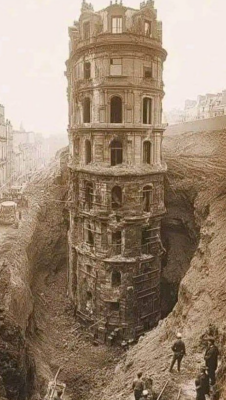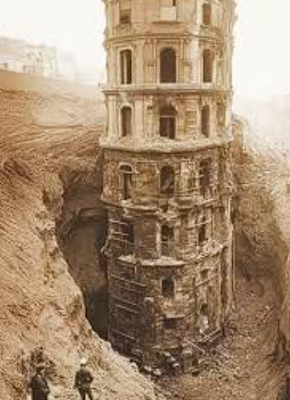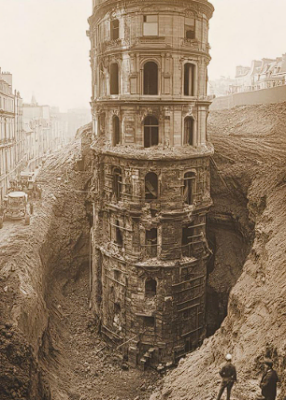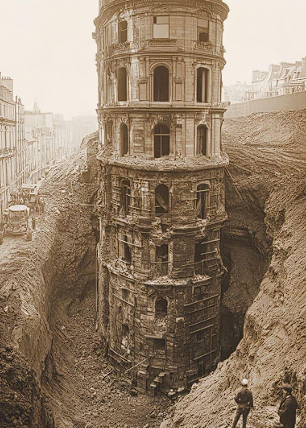The discovery of multiple underground floors may seem surprising, but it is part of the fascinating history of the **Porta Nigra**—one of the most remarkable Roman structures in the world. Located in Trier, Germany, this ancient gate dates back to the **2nd century AD** and stands as a powerful testament to the city’s rich and layered past.
1. The History and Significance of Porta Nigra
1.1. A Marvel of Roman Engineering

Built as part of Trier’s fortifications, Porta Nigra was constructed using massive sandstone blocks without mortar, held together by iron clamps. Its imposing structure reflects the **ingenuity of Roman engineering**, ensuring its survival for nearly two millennia.
1.2. Transformation Through the Centuries
Over time, Porta Nigra underwent various modifications. In the Middle Ages, it was transformed into a **church** under the rule of Archbishop Poppo of Babenberg. This religious function preserved the gate from destruction, unlike many other Roman structures that were dismantled for materials.
2. The Hidden Underground Floors
2.1. How the Lower Levels Were Buried
As Trier expanded, natural shifts in the landscape and urban development caused the city’s ground level to rise. Over centuries, **earth and sediment** gradually covered the lower sections of Porta Nigra, leaving only its upper portion visible.

2.2. Rediscovery Through Archaeology
Recent archaeological excavations have revealed the hidden **lower floors** of Porta Nigra for the first time in centuries. These findings provide new insights into the gate’s original scale and its role in Trier’s fortifications.
3. A Must-Visit Historical Landmark
3.1. Exploring the Monument
Visitors to Porta Nigra can explore its ancient passageways, climb to its **upper levels**, and admire breathtaking views of Trier. The well-preserved Roman architecture allows for a **tangible connection** to the past.

3.2. A Lasting Symbol of Roman Influence
The rediscovery of Porta Nigra’s underground floors further highlights the enduring **legacy of the Roman Empire**. This magnificent monument continues to captivate history enthusiasts and tourists, standing as a symbol of Trier’s deep-rooted past.
Conclusion
The **Porta Nigra** remains one of the best-preserved examples of Roman architecture in the world. With its newly uncovered lower levels, it offers a **deeper glimpse into ancient history**, reaffirming its status as an extraordinary landmark that showcases the brilliance of Roman construction and urban planning.


CÁC TIN KHÁC
Mark Twain & Olivia Langdon: A 36-Year Love Story Filled with Laughter and Devotion
The Tollund Man: A 2,400-Year-Old Mystery Preserved in a Danish Bog
Skara Brae: Scotland’s Hidden Neolithic Village
Porta Nigra: The Hidden Depths of Trier’s Iconic Roman Gate